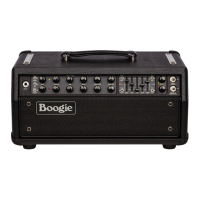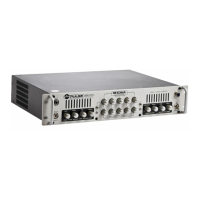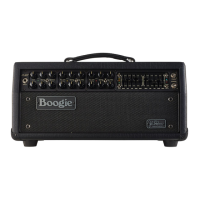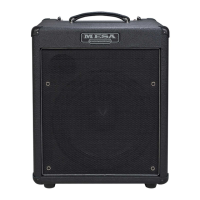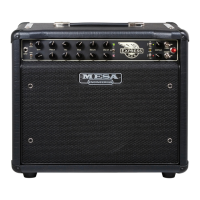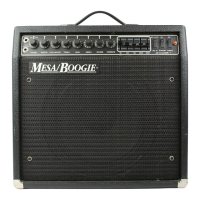PAGE 8
You can add or substitute Extension cabinets to tune your amplifier to the stylistic application or environment,
regardless of the package you chose to house your amplifier chassis in, and tune the sound physically to best
fit the music and/or venue(s) you most often play in.
OPEN BACK cabinetry leans toward beautifully balanced, open-sounding clean sounds, adding three-dimension-
ality and clarity in the top end and a low-end character with more “air” in the mix.
CLOSED-BACK cabinetry adds focus and a tighter tracking element, especially in the low end, as well as defini-
tion and punch in the rest of the spectrum. Some players use a combination of both (closed and open back)
at the same time to achieve a balance of the two dierent characteristics. Others lean one way or another in
accordance with their favored musical style, sounds, or popular Artists.
We suggest, at some point, exploring the options in each category to see if perhaps one or the other of these
dierent designs unlocks sounds and response characteristics you’ve imagined but have not yet attained. We
feel all our cabinets oer exceptional performance in their category, so whatever you have now, if it’s a MESA
Cab, you’ve got Tone. At some point, though, you may want to refine or radically change your sound and per-
haps require something that the “physical” impact and dimension of dierent cabinetry can achieve for you.
LESS CAN BE MORE! When it comes to the GAIN and TONE controls, restraint can be your friend and your key
to great Tone.
Your amplifier was designed to deliver stunning performance across a wide range of settings and musical styles
and much of that performance can be found in the median ranges of the controls. Unlike some amplifiers that
are historically known for sounding good only at extreme settings, MESA amplifiers are designed such that the
controls are active and deliver big sonic changes with subtle movements of the controls.
We suggest starting in the middle ranges of the controls, including the GAIN controls, and adjusting from there
to find the sounds in the Modes that suit your particular needs. This will do two things; One - it will mean you
have plenty of room for adjustment in either direction and Two - it will reduce the likelihood of excess noise
being introduced and help you maintain an optimum noise floor.
Granted, there will be times when you will need to run the controls closer to their maximum (or minimum)
settings, and this is fine and will not hurt your amplifier. However, if you explore the median settings on the
controls first and learn their tapers, their frequencies, and their overall range, you will better know which ones
can accommodate higher settings and which you may want to veer away from settings at the extreme ends. …
For musically relevant reasons, and also to keep the stress on tubes reasonable, so they have less chance of
microphonic tendencies or instability.
EQ WITH IQ! The Five-Band Graphic Equalizer on your MARK VII is not only an iconic piece of Rock History, it’s
also an extremely powerful shaping tool that - more often than not - needs to be used intelligently and with
restraint if you want to achieve a balanced, cohesive sound.
The radical cut and boost capability of the EQ Slider Pots allow maximum flexibility on the one hand but also
present the possibility of blowing holes in your sound if not used with a musical sense and some restraint. This
is especially true with the 750 Hz Band, where we have often seen players scooping the midrange in ever-
increasing amounts until there is literally nothing left aside from “boom and sizzle.”
The trap that awaits with the Graphic EQ is the fabled “EQ Hangover.” This pitfall is the tendency to over-EQ
your sound due to the EQ’d sound of the Graphic engaged becoming your reference instead of the natural
sound of the amplifier without the Bands cutting and boosting specific frequencies.
You’ll know you’re suering an “EQ Hangover” when the amp sounds strange, nasal, boxy …or even broken
in extreme cases when you disengage the Graphic EQ. When this happens, simply let a couple/few moments
pass without playing and start over with your shaping from a “Flat” Slider setting on the Bands. This will keep
some sense of reality in the mix. Give your ears and brain time to adjust to the natural midrange content the
